This low-FODMAP BBQ sauce is the perfect homemade barbecue sauce for everyone! It’s tangy, slightly sweet and bursting with flavor – you’ll never know it’s a sugar-free BBQ sauce and perfect for a low-carb diet, too.

Jump to:
- Why a low-FODMAP BBQ sauce?
- Why you’ll love this recipe
- Ingredients
- Is molasses low-FODMAP?
- Molasses substitute
- Is Worcestershire sauce low-FODMAP?
- Why I don’t use liquid smoke
- Liquid smoke substitutes
- Choosing low-FODMAP tomato sauce
- Best low-FODMAP sweeteners
- Instructions
- Serving suggestions
- How to store
- Variations
- FAQ
- More low-FODMAP sauces
- 📖 Recipe
- 💬 Comments
Everyone needs a great sauce to slather on backyard barbecue dishes like these Traeger Beef Ribs made with Low-FODMAP BBQ Rub.
Originally, this sauce was used in my Slow Cooker Pulled Pork recipe, but it’s now made its way onto everything from burgers to tacos. And, our dinner guests never know it’s a no garlic no onion recipe, perfect for a low-FODMAP diet. It’s truly one of my favorite low-FODMAP sauces, ever.
Why a low-FODMAP BBQ sauce?
Most of my favorite low-carb keto-friendly barbecue brands are sugar-free, but still contain garlic and onion and can cause digestive upset even in small quantities.
This is a quick and easy recipe that you can whip up for easy weeknight dinners or for those smoker recipes to feed a crowd. It's so versatile, and similar to my Blueberry BBQ Sauce, it's become one of my favorite low-FODMAP condiments that can be used for everything barbecue.
Don’t follow a low-FODMAP diet? This homemade BBQ sauce is for you, too. Even though this is a no garlic no onion recipe, if you feel like adding some garlic and onion, go for it! It’s plenty zesty all on its own, but add those alliums if you wish for some extra flavor. I find that ½ teaspoon of each does the trick.
Why you’ll love this recipe
- Fast and easy – it's ready in about 15 minutes
- Sugar-free and low-carb – there’s no refined sugar or high-fructose corn syrup. However, you can use regular sugar or brown sugar if you don't follow a low-carb diet.
- Save money – making your own healthy BBQ sauce from scratch is so economical
- BBQ sauce without ketchup – sometimes low-FODMAP ketchup is hard to find - you don't need it for this recipe
- Customize the ingredients – you can adjust the flavors depending on your individual taste
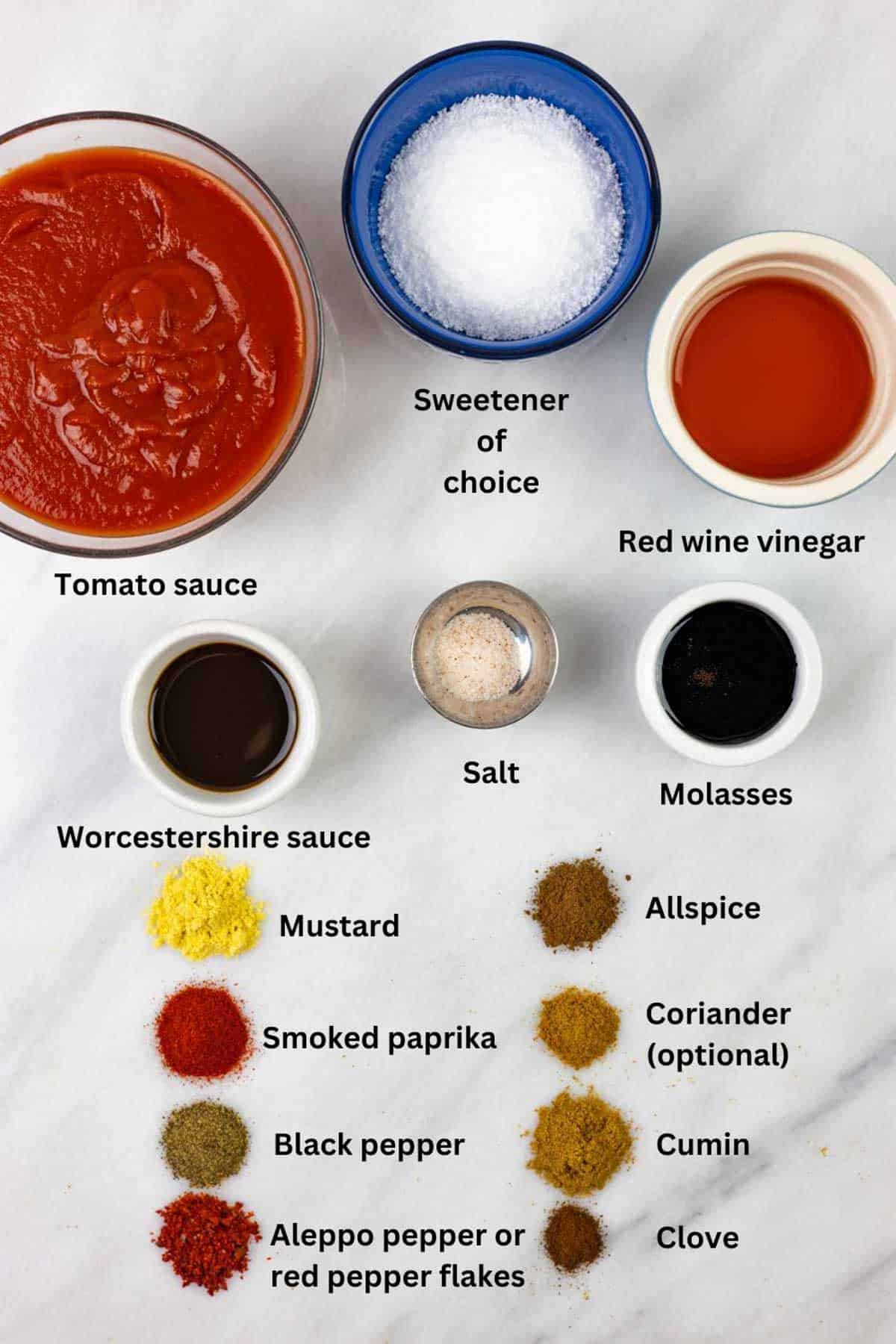
Ingredients
This is very simple to make and made with all low-carb low-FODMAP ingredients:
- Tomato sauce – make sure you choose a brand that doesn't include garlic and onion
- Molasses – adds a rich flavor and is safely consumed in very small quantities. Blackstrap is best. Use brown sugar, maple syrup or Swerve Brown as a molasses substitute. Omit for Whole30.
- Red wine vinegar – you can also use apple cider vinegar
- Sweetener of choice – I like to use powdered stevia, monkfruit sweetener or Swerve Brown to keep the recipe low-carb. See below for low-FODMAP sweetener options. Use date paste for Whole30.
- Worcestershire sauce – adds an incredible amount of umami. Use coconut aminos for Whole30.
- Smoked paprika – this is a great liquid smoke substitute
- Mustard powder – you can also use regular mustard
- Allspice – contributes amazing depth of flavor
- Cumin powder – is nutty, warm and slightly smoky
- Powdered clove – adds a strong, pungent, sweetness
- Powdered coriander – optional, but adds a light, sweet citrus flavor
- Red pepper flakes or Aleppo pepper – for a gentle kick. Read more about Aleppo pepper in my Aleppo pepper ingredient spotlight.
- Salt and pepper – brings the flavors together
Is molasses low-FODMAP?
When adding molasses to recipes, it all comes down to the amount used. Molasses is considered high-FODMAP in servings over 1 teaspoon. However, this entire recipe includes 3 tablespoons which are spread over 16 servings, so the amount consumed in one serving is a touch over ½ teaspoon.
Molasses substitute
Feel free to leave the molasses out completely or use a substitute for molasses. Here are a few good options:
- Maple syrup – one reader used maple syrup as a molasses substitute and replacement for sugar and loved it
- Brown sugar and Swerve Brown – both are great options. Use these to replace the molasses and the sweetener in the recipe.
- Pure monkfruit extract – it has a very molasses-like flavor. Use a very small amount to replace molasses and sweetener in the recipe.
- Add a splash of bourbon – adds a caramel-like flavor and the alcohol will cook off as it simmers
Is Worcestershire sauce low-FODMAP?
Like using molasses, it’s all about serving size or amount used in the recipe. Most brands contain garlic and onion, but the amount ingested is considerably below amounts that tend to cause digestive upset.
The Monash University App shows that a serving size of up to 2 tablespoons is FODMAP-friendly, which is quite a bit and more than would be consumed when just using it as a seasoning.
Why I don’t use liquid smoke
There is some debate about side-effects of liquid smoke. It has been shown to contain carcinogens and can cause digestive upset for those sensitive to smoked or barbecued foods.
Many BBQ recipes call for liquid smoke. However, I’ve found that many products contain unwanted ingredients such as high-fructose corn syrup, flavorings, colorings and monosodium glutamate (which can cause migraines in some people). Instead, I opt to create that smoky BBQ flavor by adding smoked paprika or other spices that add a natural smoke flavor, without unwanted ingredients.
There are a few products that only contain water and hickory smoke concentrate, like Wright’s Hickory Liquid Smoke. While it hasn’t been tested for FODMAPs, chances are the minute amount used won’t lead to unwanted symptoms.
What is liquid smoke? The simple answer is, in its purest form, it is a natural product that is made from burning wood. Water vapor from fire is condensed and distilled, forming a yellow-ish brown substance that captures the flavor and essence of the actual smoke.
Liquid smoke substitutes
The best liquid smoke substitutes are spices that are readily available in most grocery stores.
My preferred smoky spices are:
I prefer the taste of smoked paprika in this recipe, but feel free to use chipotle powder as a smoked paprika substitute. It will make a slightly spicy BBQ sauce, but will still taste so, so good.
Choosing low-FODMAP tomato sauce
Many tomato sauces are not FODMAP-friendly and contain onion and garlic. Always be sure to read the ingredients before making your purchase. Sometimes garlic, onion and other spices can be added where you least expect it.
I’m a huge fan of the Pomi brand and their velvety smooth Passata, which is a tomato puree with a small amount of salt. It’s great for making barbecue sauces and ketchup. However, any tomato sauce will work for this recipe. Keep in mind that consistency will vary between brands.
Pomi is also my favorite brand to use for low-FODMAP pasta sauces. They have very high quality products, contain only tomatoes and are available in most grocery stores and online.
Best low-FODMAP sweeteners
There are many options of low-FODMAP sweeteners that work well in this recipe:
- Stevia powder – is FODMAP-friendly and is also a great option to keep this recipe sugar-free and low-carb. Stevia drops can also be used.
- Erythritol – is considered to be low-FODMAP, even though it is a sugar alcohol (polyol). Some people are sensitive to it (like myself) and it may lead to digestive disturbance.
- Allulose – tends to have good digestive tolerance, but can also lead to digestive disturbance
- Maple syrup – will add carbs and magical flavor to the recipe. But, is maple syrup low-FODMAP? It is in quantities up to 2 tablespoons, which is far more than would be consumed in a serving of this sauce.
- Maple sugar – contains low amounts of fructose and like maple syrup, imparts a rich flavor
- Pure monk fruit – has an earthy, caramel flavor and is FODMAP-friendly. Keep in mind that its sweetness is very concentrated and only a very tiny amount is used.
- Dates or date paste - if you're following a Whole30 diet and are worried about FODMAPs, a serving of up to 5 dates is considered low-FODMAP. Larger servings contain moderate to high amounts of fructans and sorbitol.
Instructions
It only takes about 15 minutes to make the best BBQ sauce ever:
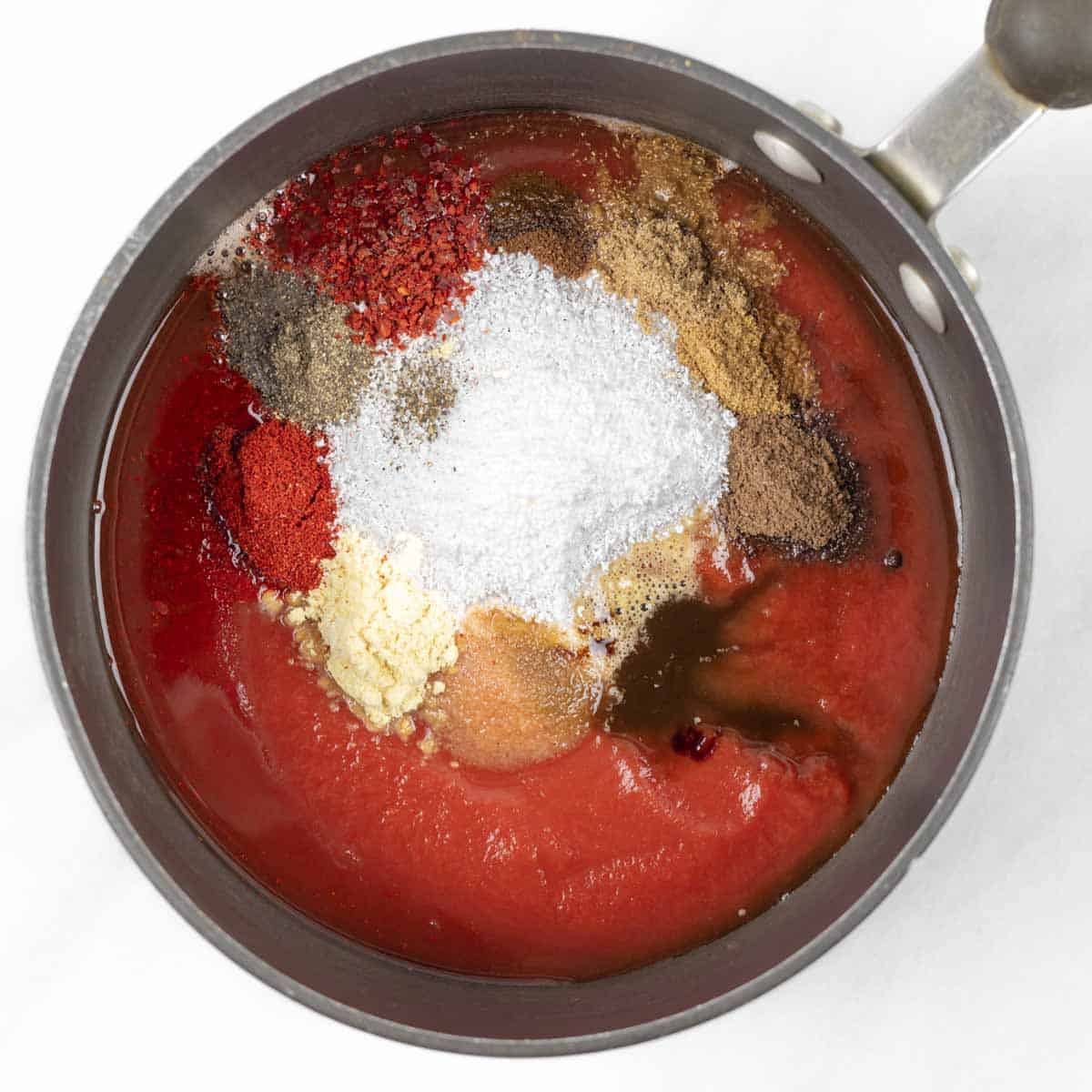
Add all ingredients to a medium saucepan.
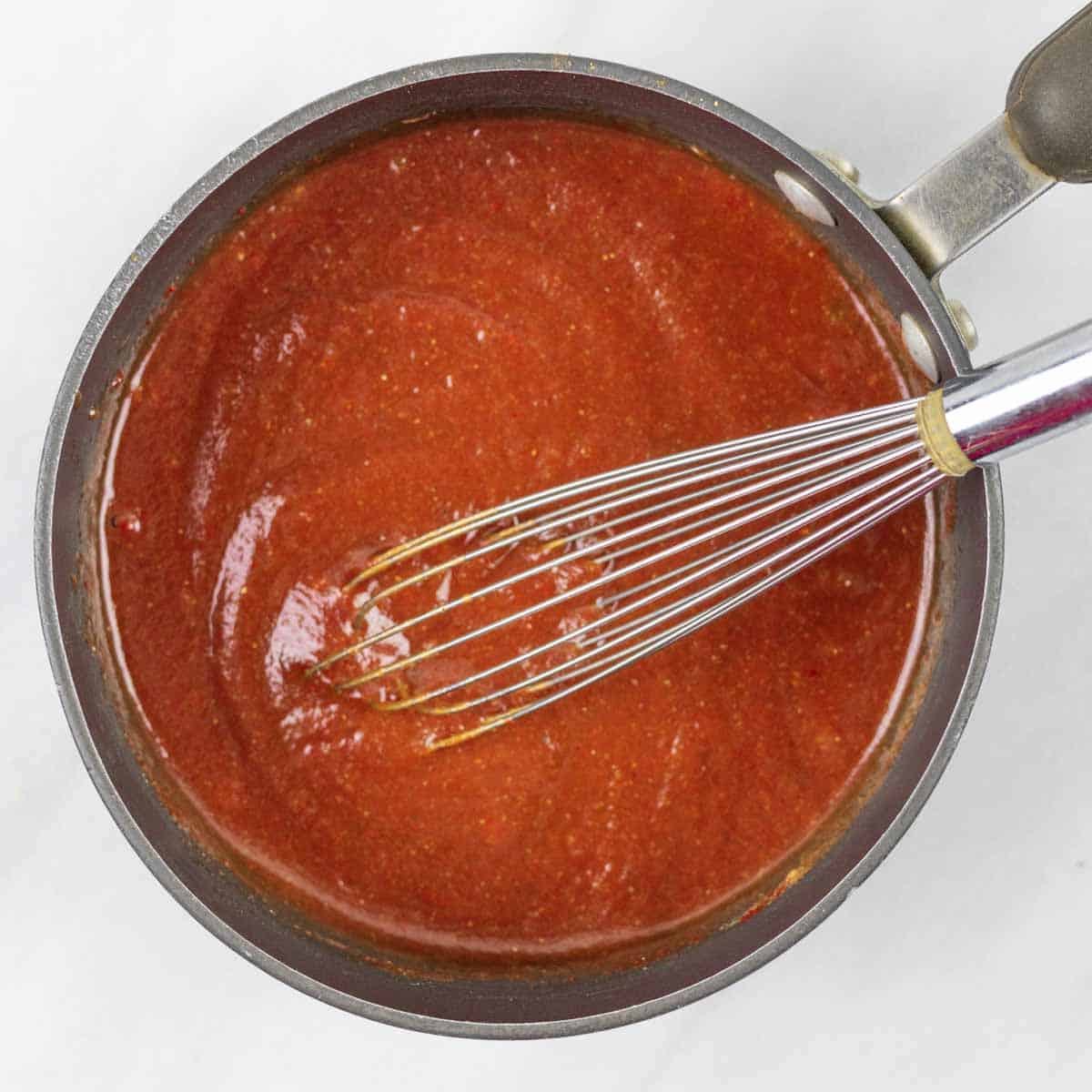
Whisk and simmer for 5-10 minutes over medium heat, until slightly thickened.
Add additional seasoning to taste and store covered in the refrigerator.
TIP: The flavors will continue to grow and combine the longer it sits. While this can be used right away, it's best to make it a day ahead of time for the best flavor.
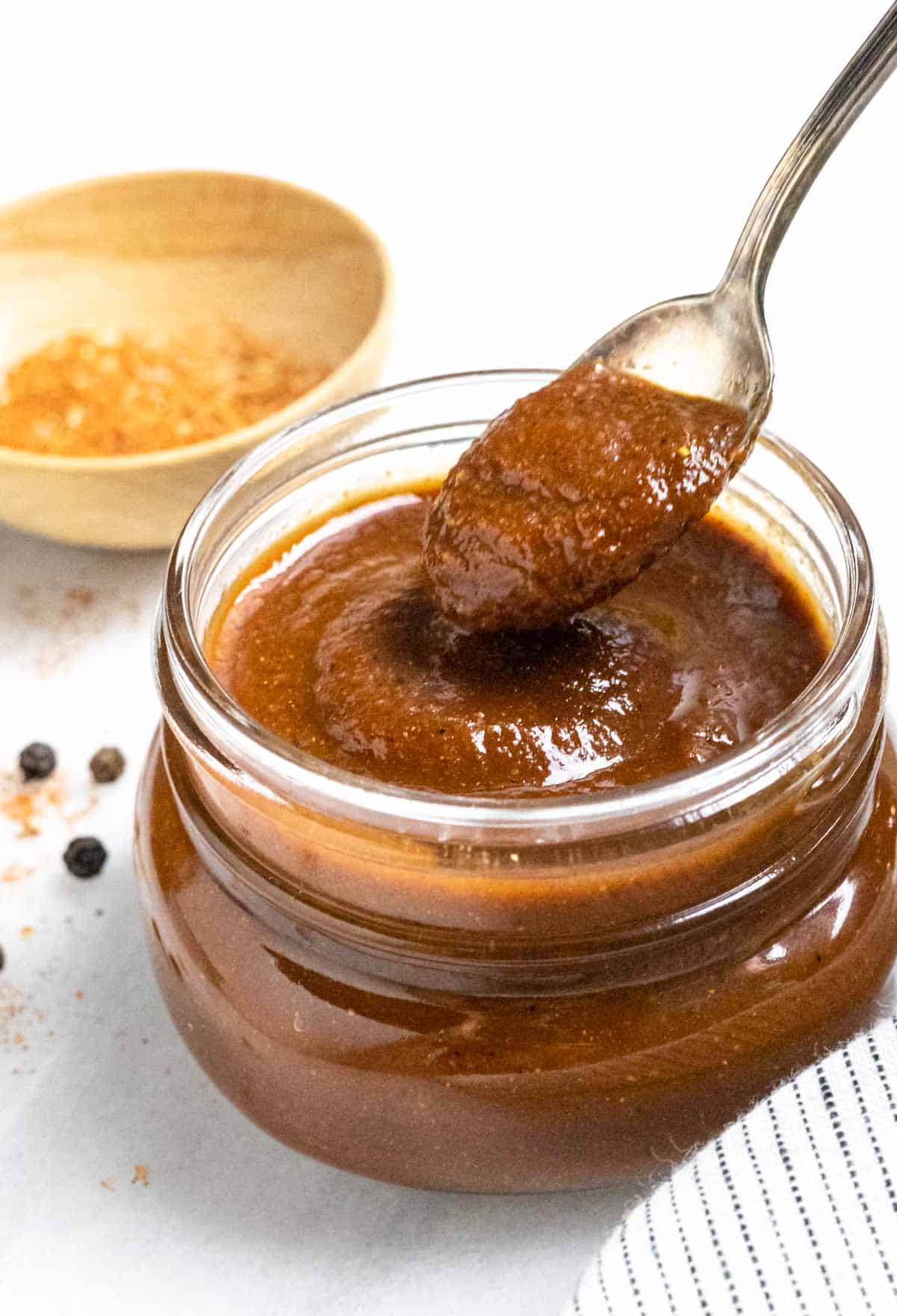
Serving suggestions
This is where you get creative:
- Grilled or smoked proteins – slather on Smoked Beef Ribs, barbecue chicken, shrimp skewers and even tofu
- Pulled pork – it's delicious on pulled pork, chicken or beef sandwiches
- Condiment – spoon on some sliders or hot dogs
- Low-FODMAP dip – dunk a toasted cheese sandwich, fries or use as a dip for chicken wings
- Barbecue pizza – make a homemade pizza crust and bake a barbecue pizza with all the fixins
- Steak sauce – use as a dipping sauce for grilled steak or Smoked Flank Steak
How to store
Store in the refrigerator for up to 10 days in an air-tight container. I like using mason jars.
If you won’t use it all in that time, consider freezing it.
Variations
- Spicy – add some cayenne, chipotle powder, increase the amount of red pepper or Aleppo pepper flakes or squeeze in some Tapatio or sriracha
- Bourbon – add a splash of Kentucky bourbon to the pot! It adds so much flavor and the alcohol will cook off as the ingredients simmer.
- Port wine – while this option will add a few carbs, it adds an amazing rich flavor. Add 2 tablespoons to the pot while it’s simmering.
- Lower the sodium – make a low sodium BBQ sauce by eliminating or cutting back on the Worcestershire or leaving out the additional salt
- Whole30 BBQ sauce – replace the Worcestershire with coconut aminos and replace the sweetener with a pureed sweet fruit, such as mango or pineapple or use date paste. Mango BBQ sauce is phenomenal! Also consider adding ½ - 1 cup of pureed pineapple. Keep in mind that these will increase the carb content a bit and it will have to simmer just a little longer on the stove if you choose to add pureed fruit.
- Garlic-infused olive oil – for a hint of garlic flavor, add up to 2 tablespoons of garlic-infused olive oil
- Liquid smoke – if you like a super smoky BBQ sauce, this will add a touch of hickory flavor. Start with ¼ teaspoon and add more to taste.
- Anchovy paste – adding ½ teaspoon provides an extra layer of umami. It’s SO good and does not impart a fishy flavor. If using, be sure to eliminate the salt.
- Tamarind paste – create a sweet and tangy BBQ sauce by adding a teaspoon. This adds a bright, citrus-like flavor and is one of my favorite additions.
FAQ
Absolutely. Place in an airtight container and freeze for up to six months. I like using mason jars.
If it's made from only tomatoes it is low in FODMAPs. However, most brands contain onion, garlic and undeclared ‘spices’, so be sure to check the ingredient label for unwanted high-FODMAP ingredients.
Tomato puree is made from tomatoes that have been cooked until very soft, then pureed to a liquid. Paste is cooked longer than puree, creating a thick paste, with intense tomato flavor.
Both products are made from ripe tomatoes. The fruit is cooked, then pureed into a liquid. Sauce can be chunky and slightly thinner than puree. Puree is consistently smooth and uniform in texture and thicker than typical tomato sauce.
Did you make this recipe? Let me know how you liked it by giving a star rating and leaving a comment!
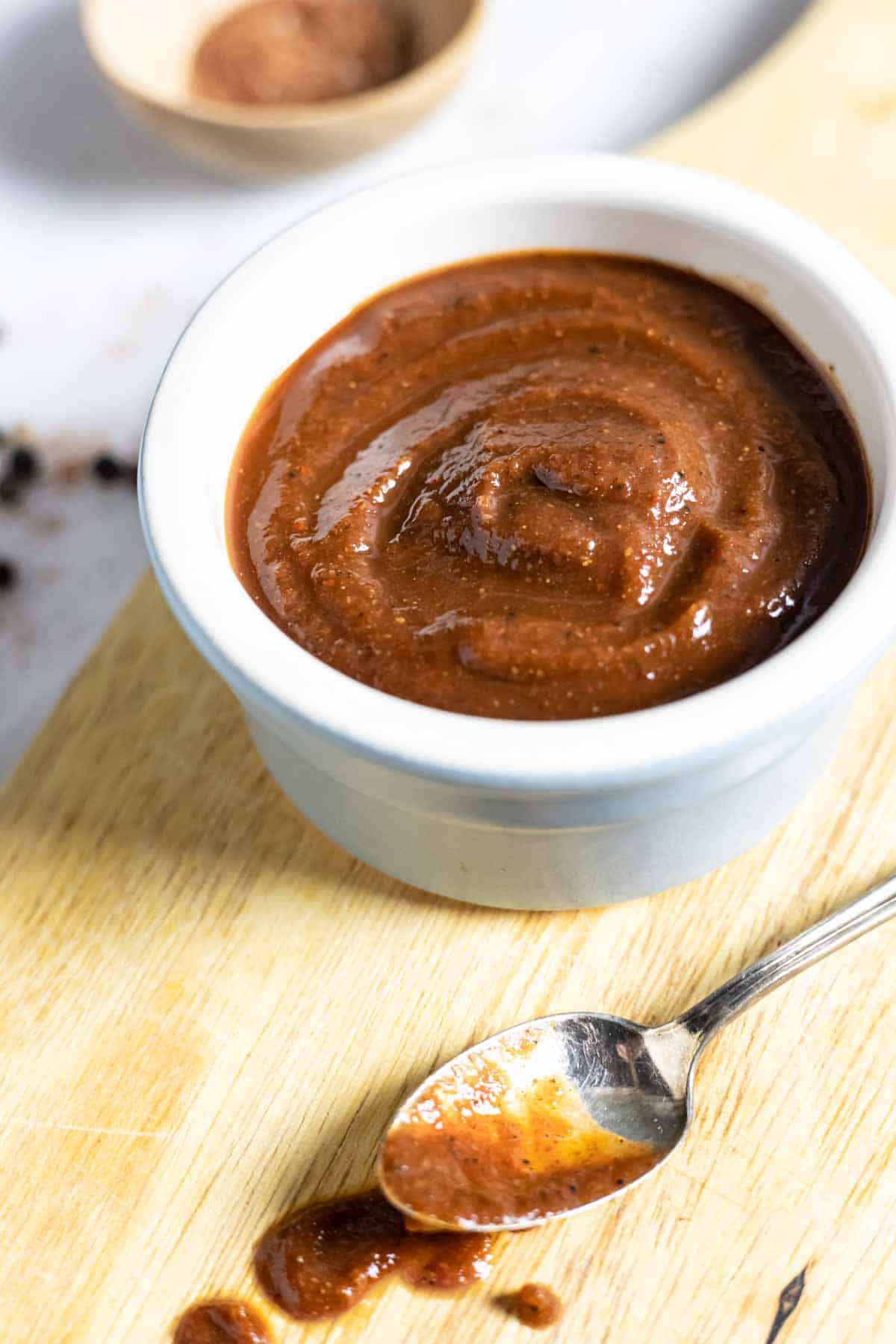
If you're looking for more low-FODMAP sauces and dips, be sure to check out my Sauces, Dips and Dressings and low-FODMAP recipes categories!
📖 Recipe
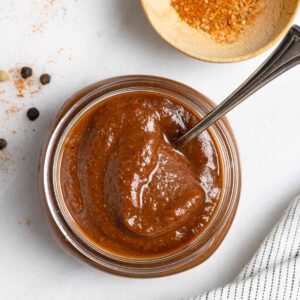
Low-FODMAP BBQ Sauce (no ketchup)
Ingredients
- 15 ounces tomato sauce
- 3 tablespoons molasses (blackstrap is best)
- ⅓ cup red wine vinegar (can also use apple cider vinegar)
- ⅓ cup powdered stevia (or sweetener of choice)
- 3 tablespoons Worcestershire sauce
- 2 teaspoons mustard powder
- 1 teaspoon smoked paprika
- ¾ teaspoon salt
- ½ teaspoon allspice
- ½ teaspoon cumin
- ½ teaspoon black pepper
- ¼ teaspoon red pepper flakes (or Aleppo pepper - read more about Aleppo pepper in my Aleppo pepper ingredient spotlight)
- ⅛ teaspoon powdered clove
- ½ teaspoon powdered coriander (optional)
Instructions
- Combine all ingredients in a medium saucepan.
- Simmer over low heat 5-10 minutes, until the sauce is slightly thickened, whisking often.
- Season to taste.
Notes
How to store
Store in the refrigerator for up to 10 days in an air-tight container. I like using mason jars. If you won’t use it all in that time, consider freezing it in an airtight container for up to 6 months.Variations
- Spicy – add some cayenne, chipotle powder, increase the amount of red pepper or Aleppo pepper flakes or squeeze in some Tapatio or sriracha
- Bourbon – add a splash of Kentucky bourbon to the pot! It adds so much flavor and the alcohol will cook off as the ingredients simmer.
- Port wine – while this option will add a few carbs, it’s amazing in BBQ sauce and adds a rich flavor. Add 2 tablespoons to the pot while it’s simmering.
- Lower the sodium – make it low sodium by eliminating or cutting back on the Worcestershire
- Whole30 BBQ sauce – replace the Worcestershire with coconut aminos and replace the sweetener with a pureed sweet fruit, such as mango or pineapple. Mango BBQ sauce is phenomenal! Also consider adding ½ - 1 cup of pureed pineapple. Keep in mind that these will increase the carb content a bit and it will have to simmer just a little longer on the stove if you choose to add pureed fruit.
- Warming spices – play with flavor variations by adding a small amount of cinnamon or turmeric powders. About ⅛ teaspoon is plenty.
- Garlic-infused olive oil – for a touch of garlic flavor, add up to 2 tablespoons of garlic-infused olive oil
- Liquid smoke – if you like a super smoky BBQ sauce, this will add a touch of hickory flavor. Start with ¼ teaspoon and add more to taste.
- Anchovy paste – adding ½ teaspoon provides an extra layer of umami. It’s SO good and does not impart a fishy flavor.
- Tamarind paste – create a sweet and tangy barbecue sauce by adding a teaspoon. This adds a bright, citrus-like flavor.
Nutrition
*Net carbs = carbohydrates - fiber
Nutritional information is an estimate, calculated using online tools and does not include optional ingredients unless otherwise indicated.

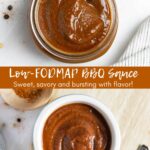
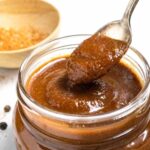

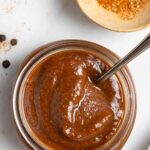
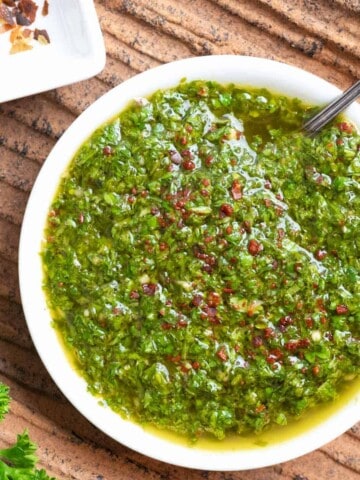
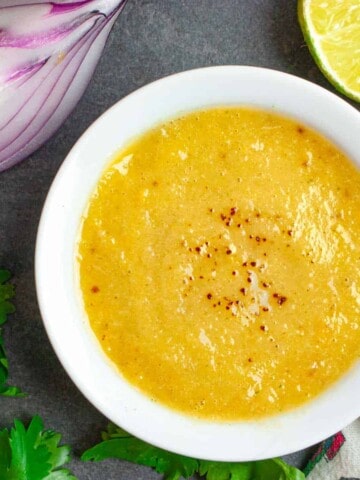
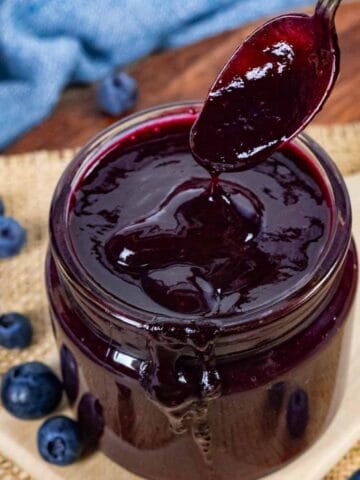
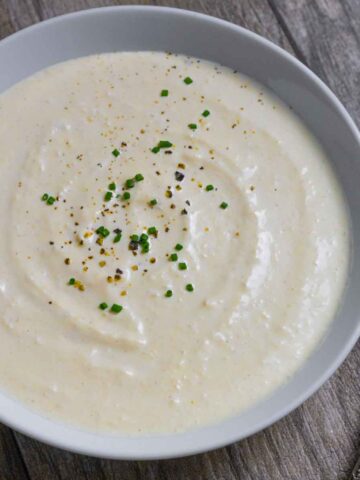
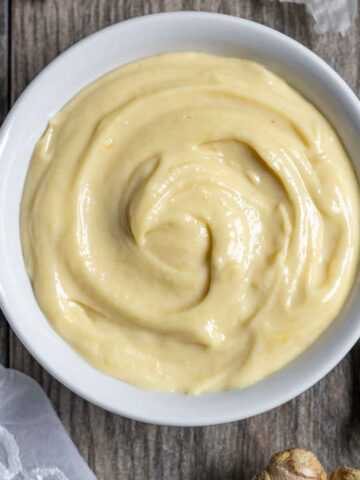
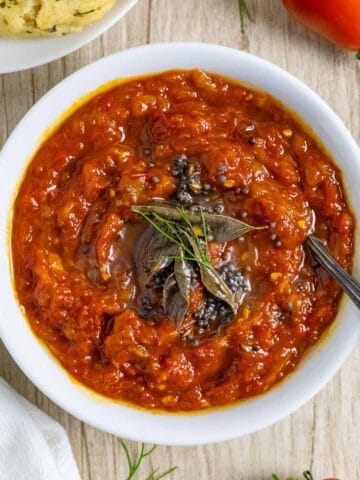
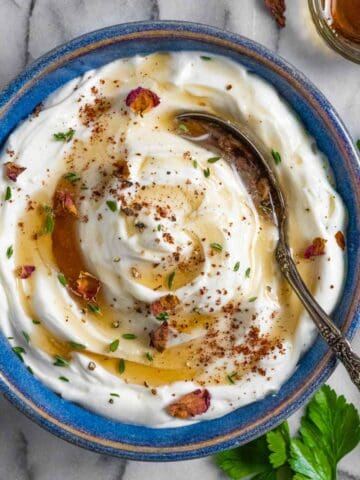
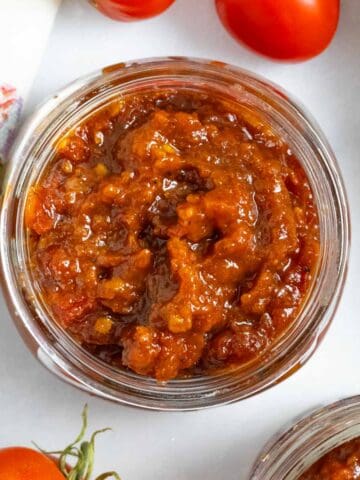
Tara says
My husband loved this! I didn't have tomato sauce without onion or garlic, so I used Rotel and blended it until mostly smooth. I was shocked to learn it didn't have any spices in it. That left the recipe spicier than we expected, but I added a bit more sweetener to balance it. We added some mung powder to replace garlic/onion flavor. Also subbed sugar free syrup for the molasses since he has Type 1 Diabetes.
Tracey Hatch-Rizzi says
Hi Tara!
I'm so glad your husband loved it. Way to go with the substitutions! These sound great - thanks for letting me know! I'm not familiar with mung powder as a garlic replacer. I use hing (asafoetida) that works really well for most recipes.
Best,
Tracey
Kim says
I made a couple swaps (maple for the molasses and coco aminos for Worcestershire and used organic minimally processed cane sugar for the sweetener). I have some low fodmap garlic replacer I used as well. It turned out delicious!! I simmered until it reached a rich color, and the flavors melded so well.
Tracey Hatch-Rizzi says
Hi Kim,
Those are great swaps - thanks for sharing them! I'll bet it was absolutely wonderful. I'm so happy you liked the recipe!
Best,
Tracey